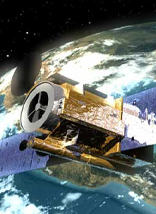 |
 |
|
|
- Important Dates
- Session Information
- Invited Speakers
- List of Abstracts
- Accommodations
- Special Needs
- Student Travel Award
- Poster Instructions
- Contact Information








Caption: Two full disk images taken by the X-Ray Telescope aboard Hinode are taken one solar rotation apart. In the center of the left hand image are NOAA active regions 10931 and 10932. A rotation later the active regions have disappeared, but their effect is still noticeable in the long quiet sun loops. Yohkoh experts can comment on whether this was commonly seen by SXT. This type of evolution was seen in Skylab, though not this clearly (1982; ApJ 266, 359-365). |
Exploring the Active Sun
Session Information
Magnetic structuring of the Sun from beneath the photosphere through the corona
- Helioseismology
- Quiet sun magntic fields
- Active region formation
- Coronal cavities and prominences
- Flux emergence
- Field amplification and generation
- Photspheric, Chromospheric and coronal magentic field structures
Energy transport and dissipation through the solar atmosphere and into the heliosphere
- Coronal heating & loop models
- Chromospheric dynamics
- Solar wind source and acceleration
- Wave propagation and dissipation
- Thermal conduction
- Radiative cooling; mass flow; non-thermal particles
Instabilities, Transients and Eruptions
- Filament activations and eruptions
- Flares & CMEs
- Coronal Bright Fronts (EIT Waves)
- Generation of waves; acceleration of material
- Particle acceleration
- MHD instabilities
- Plasma instabilities
- Thermal instabilities
Solar-Stellar Connections
- Lessons from stellar astrophysics, coronal heating, dynamo problems, stellar evolution
Future Needs - Observational, Theoretical and Computational
- Solar-C, IRIS, SO, SPP+, ATST, Decadal Survey Update
- Critical capabilities needed to address the fundamental outstanding problems

|
|